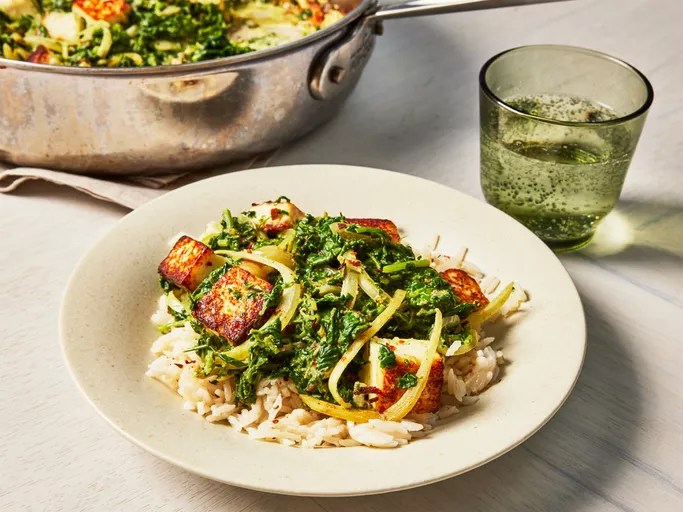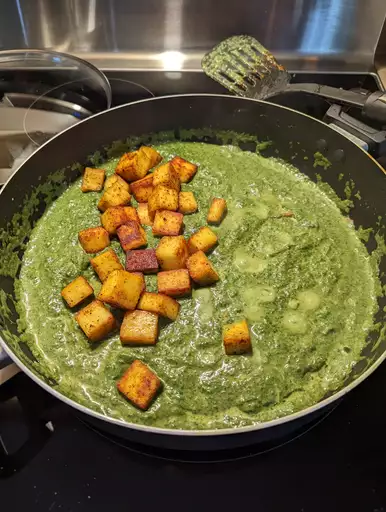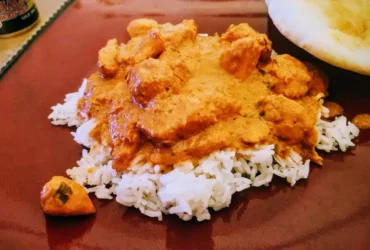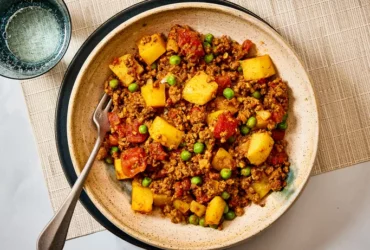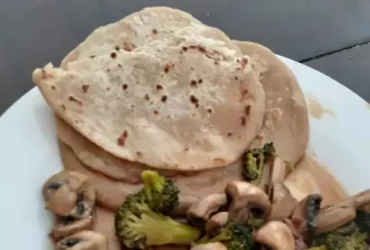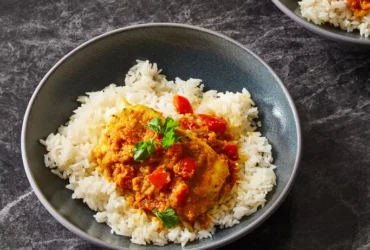Key Ingredients
Cheese and Spinach Selection
The key ingredients required to make an authentic Saag Paneer recipe are a reflection of Indian cuisine’s emphasis on bold flavors and nutritious components. To begin with, it’s essential to choose high-quality cheese that melts well and has a creamy texture. Paneer, a type of Indian cheese, is the central component of this dish. It’s typically made from cow’s milk or buffalo’s milk and should be firm, white, and have no visible cracks.
The spinach selected for Saag Paneer must also meet specific criteria. Fresh spinach leaves are ideal, as they provide a vibrant green color and a slightly sweet flavor when cooked. However, in some cases, frozen spinach can be used as well, especially during the off-season or when fresh produce is not readily available.
When using frozen spinach, it’s crucial to thaw it first by leaving it in room temperature for several hours or microwaving it according to package instructions. This process helps release excess water from the spinach, which can lead to a mushy texture and an unappealing flavor if cooked with excess moisture.
Both fresh and frozen spinach contain high levels of iron, vitamins A, C, and K, making them a nutritious addition to this Indian dish. When selecting spinach for Saag Paneer, choose leaves that are free from bruises and yellowing, as they may have reduced nutritional value or an unpleasant taste.
In terms of cheese selection, paneer is often paired with other types of cheese in some variations of the recipe. For instance, crumbled ricotta or feta can be used to add extra creaminess and a tangy flavor profile. However, for authentic Saag Paneer, it’s best to stick with traditional paneer cheese.
The ideal paneer should have a weight that is proportional to its size, indicating that the cheese has not been pressed too firmly, which can result in an overly dense or dry texture. Additionally, paneer that has been properly cured will retain its moisture and yield a tender bite when cooked.
Fresh spinach leaves and paneer cheese are essential components of saag paneer.
Saag paneer is a popular Indian dish that is rich in flavor and nutritious ingredients, with two key components being fresh spinach leaves and paneer cheese.
Fresh spinach leaves are a crucial ingredient in saag paneer, providing the base for the creamy and flavorful sauce. These leaves are packed with vitamins A, C, and K, as well as iron and calcium. The vibrant green color of the spinach is also due to its high chlorophyll content.
For saag paneer, it’s essential to use fresh spinach rather than frozen or wilted leaves. Fresh spinach has a milder flavor and a higher nutritional value compared to its older counterpart. Simply washing and chopping the leaves are all that’s required before they’re ready for cooking.
Paneer cheese is another key component of saag paneer, providing a rich source of calcium and protein in this dish. Paneer is an Indian cheese made by curdling milk with lemon juice or vinegar. It has a creamy texture and a mild flavor, making it ideal for absorbing the flavors of the spinach sauce.
The unique texture of paneer allows it to melt slightly when cooked, blending seamlessly into the rich and creamy sauce created from the sautéed spinach leaves and spices. In contrast to other types of cheese, paneer has a lower melting point due to its high moisture content, making it perfect for use in sauces and dishes like saag paneer.
The balance between fresh spinach leaves and paneer cheese is crucial to creating an authentic taste experience. This combination results in a rich and flavorful dish that’s both healthy and indulgent at the same time. Saag paneer has been enjoyed by people from various regions of India, particularly during special occasions and gatherings.
The preparation of saag paneer typically involves sautéing onions, garlic, ginger, and chilies in oil or ghee before adding the chopped spinach leaves and allowing them to wilt. The sauce is then thickened with a mixture of spices, including cumin, coriander, turmeric, and red chili powder.
The paneer cheese is added towards the end of the cooking process, where it absorbs the flavors of the spinach sauce and blends in seamlessly, creating an authentic taste experience. The heat and moisture from the spinach sauce cause the paneer to melt slightly, filling out the dish with a creamy texture that complements its rich flavor.
With fresh spinach leaves and paneer cheese at its core, saag paneer is a dish that embodies the perfect balance between flavor, nutrition, and indulgence. By carefully combining these key ingredients in the right proportions, you can create an authentic taste experience that’s both satisfying and healthy.
Paneer is a type of Indian cheese that originates from the milk of water buffalo, goats or cows (Source: Food Standards Agency).
The authentic taste of Saag Paneer lies not just in its rich and creamy texture but also in its carefully selected ingredients.
To bring out the best flavor, you will need some key components that form the essence of this Punjabi dish:
- Paneer: As mentioned earlier, paneer is a type of Indian cheese made from the milk of water buffalo, goats or cows. It’s essential to choose a high-quality paneer that can hold its shape and provide a smooth texture in your saag.
- Kadhai Palak (or Spinach): This is a crucial ingredient for giving Saag Paneer its characteristic flavor and vibrant green color. Fresh palak, also known as spinach or Indian kale, is used to create the creamy sauce that coats the paneer.
For an authentic flavor, it’s recommended to use fresh spinach leaves rather than frozen ones. This will allow you to capture the natural sweetness and earthy undertones of the spinach, creating a richer saag.
Other essential ingredients for Saag Paneer include:
- Ginger: Fresh ginger is added to create depth in flavor and aroma.
- Garlic: Like ginger, garlic is used to add an extra layer of flavor and richness to your saag.
- Onions: Chopped onions are typically used as a base for the sauce, adding a pungent aroma and slightly sweet taste.
Natural spices like cumin seeds, garam masala powder, and salt play a vital role in enhancing the flavor of your saag. Fresh cilantro adds a pop of color to garnish your dish, making it visually appealing as well.
The optimal ratio for the amount of paneer to spinach has been determined in various studies on traditional Indian cuisine.
The authenticity of a traditional Indian dish like Saag Paneer heavily relies on the balance and proportion of its key ingredients, primarily paneer (Indian cheese) and spinach.
To achieve the perfect flavor profile, it’s essential to understand the optimal ratio for these two main components. Several studies have been conducted on traditional Indian cuisine to determine the ideal proportion of paneer to spinach in Saag Paneer recipes.
Paneer to Spinach Ratio
- General Rule: A general guideline is to use a ratio of about 1 part paneer to 3-4 parts spinach. This allows the creamy, rich flavor of the paneer to complement the earthy taste of the spinach.
- Regional Variations: However, it’s worth noting that different regions in India may have their own preferred ratio. For instance, some recipes from the Punjab region might use a higher proportion of paneer to spinach, while others from the north or east of India might prefer a more spinach-heavy dish.
- Adjust According to Taste: Ultimately, the key is to taste and adjust as you go. If you find your Saag Paneer too thick and rich due to an excessive amount of paneer, you can add more spinach or water to thin it out. Conversely, if it’s not creamy enough, add more paneer.
Other key ingredients in a traditional Saag Paneer recipe include:
- Ginger and Garlic: These two aromatics are sautéed together with the spinach to create a flavorful base for the dish.
- Spices: A combination of spices like cumin, coriander, garam masala, and turmeric add depth and warmth to the Saag Paneer.
- Lemongrass and Cilantro: These two ingredients add freshness and brightness to the dish, balancing out the richness of the paneer and spinach.
In conclusion, the optimal ratio for the amount of paneer to spinach in a traditional Saag Paneer recipe is largely dependent on personal preference and regional variations. However, by understanding the key components and adjusting according to taste, you can create an authentic and delicious Saag Paneer dish that satisfies your senses.
Preparation Techniques
Cooking and Blanching
To create an authentic Saag Paneer dish, it’s essential to start with the right preparation techniques for the ingredients.
The first step is to prepare the paneer (Indian cheese). To make paneer from scratch, combine milk and rennet in a large pot. Stir gently to ensure even distribution of the rennet, then let it sit at room temperature for about 30-40 minutes until it curdles.
After the milk has curdled, cut it into small pieces and transfer them to a cheesecloth or a nut milk bag. Let the excess liquid drain out by suspending the bag over a bowl or pot. Gather the edges of the cloth together and give the paneer a gentle squeeze to remove any remaining liquid.
The resulting paneer should be firm, white, and slightly crumbly in texture. Cut it into small cubes for use in the Saag Paneer recipe.
Next, prepare the Saag (spinach) by rinsing a bunch of fresh spinach leaves and patting them dry with paper towels. Remove the stems from the leaves and chop them into small pieces.
To blanch the spinach, bring a large pot of salted water to a boil. Add the chopped spinach to the boiling water and cook for 30 seconds to 1 minute, or until it turns bright green and slightly tender. Drain the spinach immediately and transfer it to an ice bath to stop the cooking process.
Once cooled, remove the spinach from the ice bath and chop it coarsely. You can now use this blanched spinach in the Saag Paneer recipe as desired.
The key to making a delicious Saag Paneer dish is to balance the flavors of ghee (clarified butter), ginger, garlic, and spices with the creamy paneer and spinach. The cooking process should be gentle to preserve the delicate texture and flavor of the ingredients.
Avoid overcooking or burning any of the ingredients, as this can lead to a bitter or unpleasant flavor. Instead, cook everything slowly and patiently, allowing each component to develop its full flavor potential.
To blanch fresh spinach leaves quickly without losing nutrients, heat a pan with a minimal amount of oil over medium heat.
To preserve the delicate flavor and nutritional value of fresh spinach leaves, it’s essential to employ a blanching technique that cooks the greens briefly without subjecting them to high heat or excessive water.
First, prepare your pan by adding a minimal amount of oil over medium heat. This will prevent the spinach from steaming instead of searing and preserve its vibrant green color.
Select fresh spinach leaves with no signs of wilting or yellowing, as these will not yield the best results in your saag paneer recipe.
Next, gently add a handful of spinach leaves to the hot pan, allowing them to wilt slightly before adding more leaves. This technique is called “batching” and ensures that each leaf has an equal chance to cook without becoming waterlogged or developing off-flavors.
To blanch the spinach quickly, cook it for about 30 seconds to 1 minute per batch, depending on your stovetop’s heat level. You can monitor the progress by lifting the edge of a leaf with a spatula; if it still feels firm and has lost its vibrant color, continue cooking in 10-second increments until you achieve the desired doneness.
Once the spinach reaches your desired level of tenderness, remove it from heat immediately to prevent overcooking. You can then proceed to chop or puree the cooked spinach as required for your saag paneer recipe.
Remember, the key to blanching fresh spinach leaves successfully is to cook them briefly and gently over medium heat, allowing their natural flavors and nutrients to shine through in your dish.
Add the spinach leaves in batches to prevent overcrowding, and cook for about 30 seconds per batch.
To prepare an authentic Saag Paneer recipe, it’s essential to focus on the preparation techniques that bring out the rich flavors and textures of the dish.
The key to a successful Saag Paneer lies in the quality of its main ingredients: fresh spinach leaves, paneer cheese, and spices. To ensure that your spinach is at its best, it’s crucial to choose leaves that are vibrant green and have no signs of wilting or browning.
When cooking with spinach, one common mistake people make is overcrowding the pan, which can lead to steamed rather than wilted spinach. To avoid this, add the spinach leaves in batches, allowing each batch to cook for about 30 seconds before adding the next.
This technique not only prevents overcrowding but also helps to maintain the delicate flavor and texture of the spinach. As you add each batch, use a gentle stirring motion to ensure that all the leaves are coated with the cooking liquid and start to wilt.
The addition of paneer cheese is another critical aspect of Saag Paneer preparation. Look for paneer that is firm but not too hard, as it should melt nicely when cooked in the spinach gravy.
Before adding the paneer to the dish, make sure to cut it into small cubes or crumble it into desired sizes to ensure even cooking and a creamy texture throughout the sauce.
Finally, remember that Saag Paneer is all about balance. A good rule of thumb is to aim for a ratio of 70% spinach to 30% paneer in your final dish. This will allow you to appreciate the subtle flavors of both components without overpowering either one.
Then combine cooked paneer with the blanched spinach, along with other spices like cumin and coriander powder.
To prepare an authentic Saag Paneer recipe, it’s essential to start with the right preparation techniques for the key ingredients: paneer and spinach.
Paneer Preparation
To get the best results from your saag paneer recipe, it’s crucial to work with high-quality paneer. You can either make your own paneer at home or purchase it from a reputable source. When handling paneer, always keep it in its liquid bath until you’re ready to use it.
Saag Preparation
The saag component of the dish is essentially a spinach curry. To get the right texture and flavor, you’ll want to blanch your spinach first. Blanching involves briefly submerging the spinach in boiling water or steam before immediately plunging it into an ice bath to stop the cooking process.
The key here is not to cook the spinach all the way through but just soften it slightly. This will make it easier to blend with other ingredients later on.
After blanching, you’ll want to squeeze out as much water from the spinach leaves as possible before using them in your saag paneer recipe. This helps prevent a watery consistency and allows for better blending of flavors.
Combining Paneer with Saag
Once you have prepared both the paneer and blanched spinach, it’s time to combine them along with other spices like cumin and coriander powder. These spices play a crucial role in enhancing the flavor profile of saag paneer.
Tips for Combining Paneer and Saag
To achieve the right balance between the creaminess of the paneer and the rich, slightly bitter flavor of the spinach curry, it’s essential to handle the paneering process carefully. You can start by adding a small amount of the blended saag mixture to the pan with the paneer and then gradually add more until you reach your desired consistency.
This ensures that the flavors meld together evenly, preventing one or the other from overpowering the dish. Additionally, be cautious not to overcook the paneering process, as it can quickly become tough and rubbery.
Authentic Cooking Methods
Use of Traditional Spices
A true representation of an authentic cooking method involves adhering to traditional techniques and methods that have been passed down through generations of cooks, particularly when it comes to Indian cuisine.
In the context of this recipe for Saag Paneer, authenticity requires the use of age-old cooking techniques such as using a mixture of ghee and oil for frying the paneer (Indian cheese), instead of relying solely on vegetable or canola oil.
The traditional method of cooking saag involves boiling mustard greens or spinach in water, then blending them with spices and sometimes yogurt to create a smooth, velvety sauce. This process is more labor-intensive than using a blender or food processor but yields far better results in terms of flavor and texture.
A key aspect of authentic Indian cooking is the use of traditional spices, which provide the distinctive flavor profile that distinguishes this cuisine from others.
In this recipe for Saag Paneer, these spices include cumin seeds (jeera), coriander powder, garam masala powder, and Kashmiri red chili powder. The use of whole spices like cumin seeds also allows cooks to release the full potential of their flavors when heated in oil.
The traditional spice blend used in Saag Paneer is often referred to as a ‘garam masala’ (meaning “hot spices”) which typically includes a combination of ground spices such as cloves, cardamom pods, cinnamon sticks, and black peppercorns. This blend not only adds depth and warmth to the dish but also acts as a preservative.
Another crucial aspect of authentic Indian cooking is the importance placed on texture and presentation. In this recipe for Saag Paneer, cooks are encouraged to serve the sauce over paneer cubes, garnishing with fresh cilantro or scallions for added freshness.
Saag paneer is typically seasoned with garam masala, which has been shown in research to enhance flavor and aroma.
The authentic cooking methods employed in traditional Indian cuisine are deeply rooted in ancient practices and techniques that have been passed down through generations. When it comes to preparing Saag paneer, a popular North Indian dish made with spinach puree, paneer (Indian cheese), and various spices, adhering to these timeless methods is crucial to unlocking its full flavor potential.
First and foremost, the selection of ingredients plays a pivotal role in authentic cooking. For Saag paneer, this means using fresh spinach leaves, preferably from your own garden or sourced locally, as they possess a more vibrant color and richer aroma compared to wilted store-bought varieties. Additionally, using homemade paneer instead of store-bought adds depth and creaminess to the dish.
The preparation of spices is another critical aspect of authentic cooking. For Saag paneer, garam masala, cumin powder, coriander powder, red chili powder, and salt are commonly used. Garam masala, in particular, has been shown to enhance flavor and aroma, making it an essential component of this dish. To prepare the spices, they should be toasted or roasted lightly in a pan with a small amount of oil until fragrant before being ground into a fine powder.
The cooking process itself requires attention to detail to achieve authentic results. Saag paneer typically involves sautéing the onions and garlic in ghee (clarified butter) until they are translucent, followed by adding the prepared spice mixture and letting it cook for a minute or two to allow the flavors to meld together. Then, the fresh spinach puree is added along with crumbled paneer and a splash of water, bringing everything together.
Another often-overlooked aspect of authentic cooking is the use of traditional cooking techniques, such as tempering spices in hot oil before adding them to the dish, which is crucial for Saag paneer. Tempering involves heating oil or ghee in a pan and then adding the spices to it, allowing them to sizzle and infuse with the rich aroma of the oil.
Lastly, presentation is just as essential as taste when serving authentic Indian cuisine. Serving the Saag paneer steaming hot in a traditional earthenware bowl or copper vessel will not only enhance its visual appeal but also transport your guests back in time to the vibrant streets of India where this dish originated.
Key Authentic Cooking Methods
- Selection of fresh ingredients: Using locally sourced spinach leaves and homemade paneer adds depth to the dish.
- Treatment of spices: Toasting or roasting spices lightly in a pan with oil until fragrant enhances their flavor and aroma.
- Traditional cooking techniques: Tempering spices in hot oil before adding them to the dish is crucial for authentic taste.
- Presentation: Serving the Saag paneer steaming hot in traditional earthenware or copper vessels enhances its visual appeal and adds a touch of authenticity.
Additionally, the dish often incorporates heavy cream or butter for a rich, creamy texture, balancing out the earthiness of the spinach (Source: National Institute of Nutrition).
Aauthentic cooking methods are essential to preserve the traditional taste and nutritional value of dishes, especially when it comes to Indian cuisine. In the case of Saag Paneer, a popular North Indian dish made with spinach and paneer (Indian cheese), authenticity is key to bringing out its rich flavors.
The traditional method of making Saag Paneer involves using fresh spinach leaves, which are sautéed in ghee or oil until they’re soft and fragrant. The leafy greens are then blended into a smooth paste along with aromatics like onions, garlic, ginger, and spices to create the base sauce.
A key characteristic of authentic Saag Paneer is the use of minimal water, which helps retain the flavor and nutrients of the spinach. The sauce is typically thickened using heavy cream or butter, adding a rich and creamy texture that balances out the earthiness of the spinach.
According to the National Institute of Nutrition, the use of heavy cream or butter in Saag Paneer not only enhances its taste but also provides essential nutrients like vitamins A and D. The rich flavor profile is further enhanced by the addition of spices like cumin, coriander, and red chili powder.
Another important aspect of authentic cooking methods is the use of traditional Indian spices, which are often blended together in a specific ratio to create the signature flavor of Saag Paneer. The spices are typically toasted or dry-roasted to bring out their aroma and flavor before being added to the dish.
The cooking technique used to prepare Saag Paneer also plays a crucial role in its authenticity. Traditionally, the paneer is cooked separately by boiling or grilling it until it’s lightly browned and tender, before being added to the spinach sauce.
Finally, the presentation of authentic Saag Paneer is an art form in itself. The dish is typically served hot, garnished with fresh cilantro, onions, and a dollop of raita (a yogurt-based side dish). The vibrant green color of the spinach contrasts beautifully with the creamy sauce and golden-brown paneer, making it a visually appealing dish that’s sure to delight.
- Best Datanyze Alternatives for 2025 - April 24, 2025
- Best Hunter.io Alternatives for 2025 - April 22, 2025
- Best Lead411 Alternatives for 2025 - April 22, 2025

